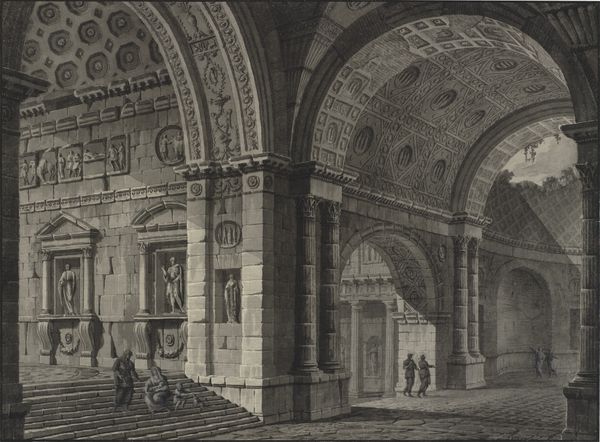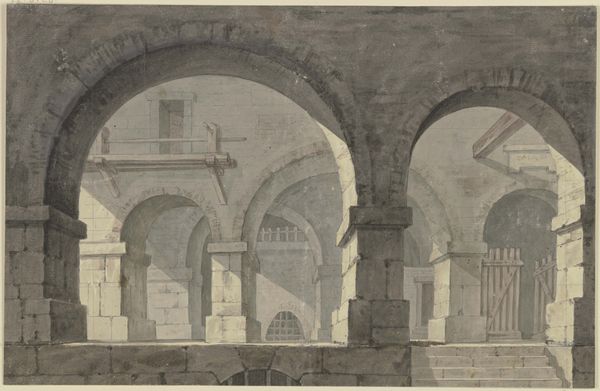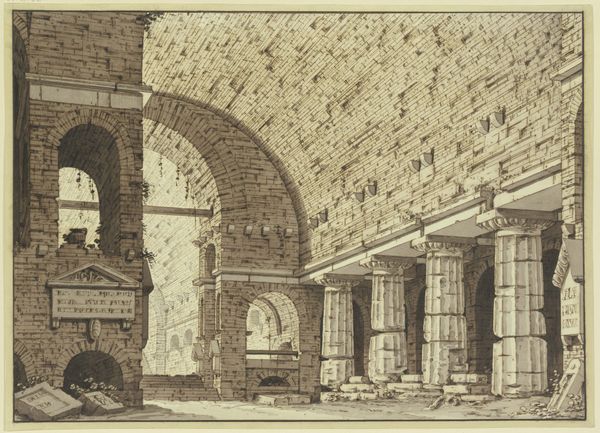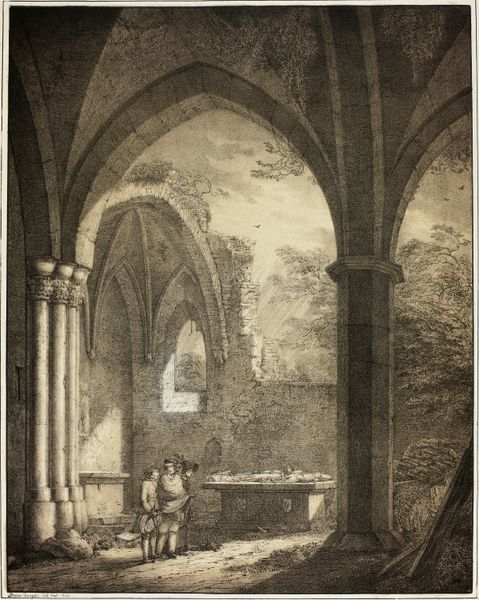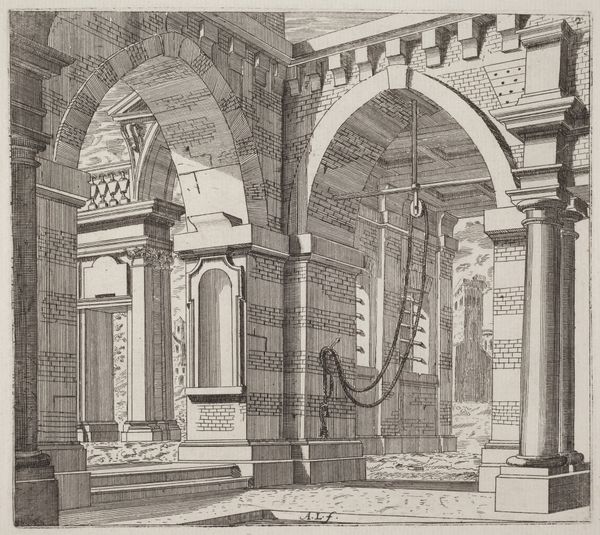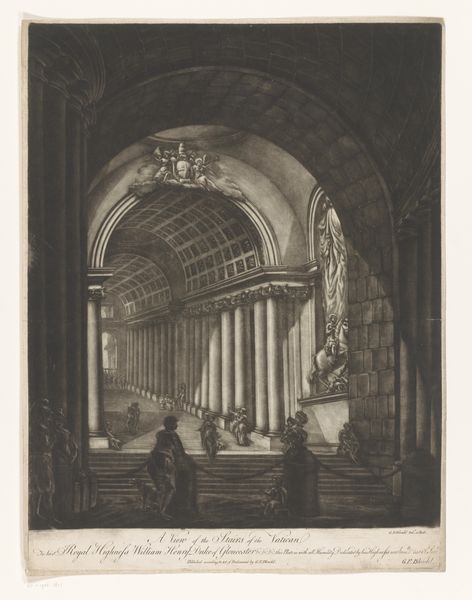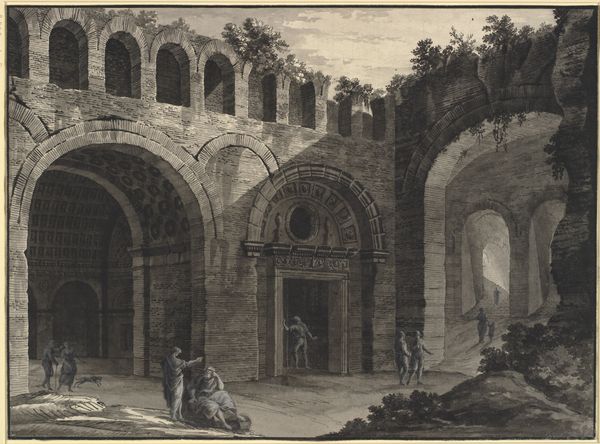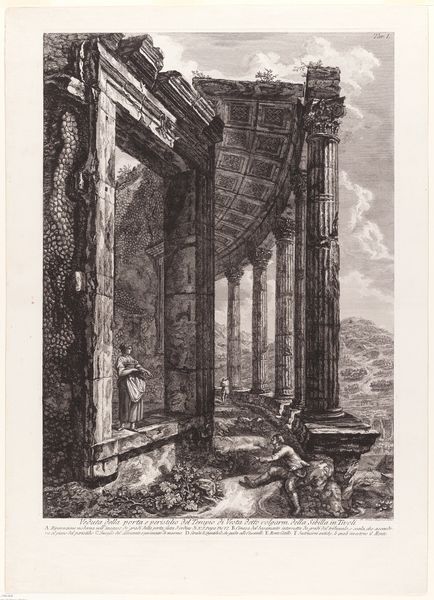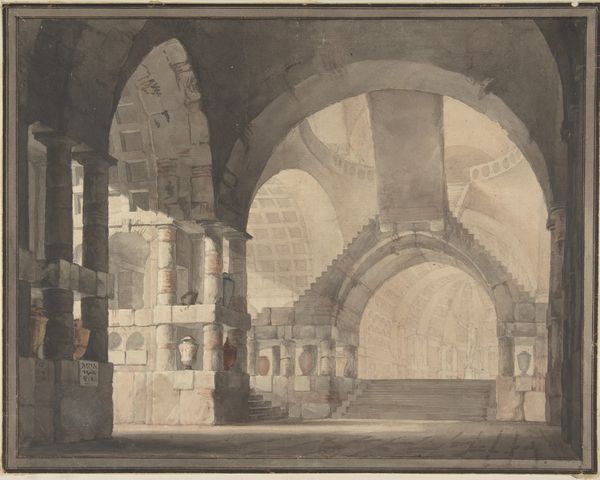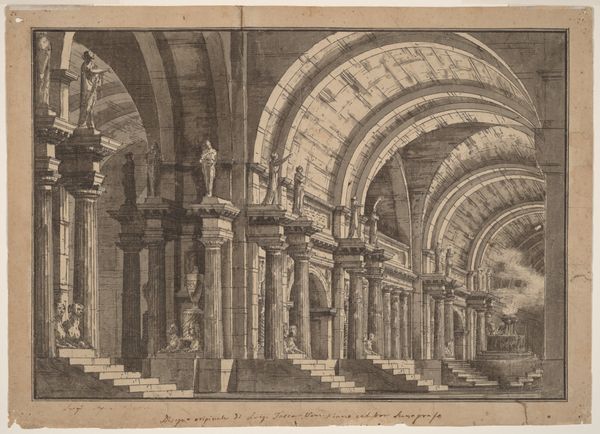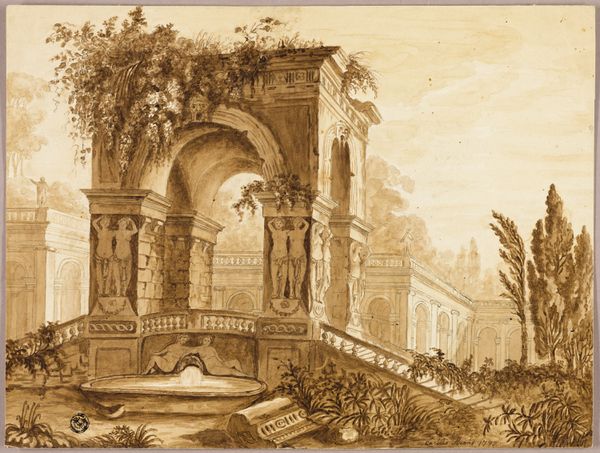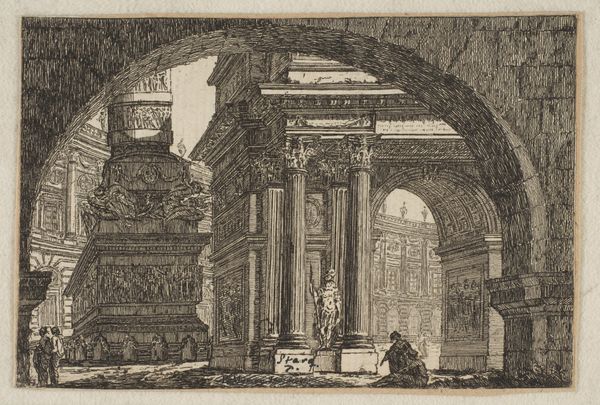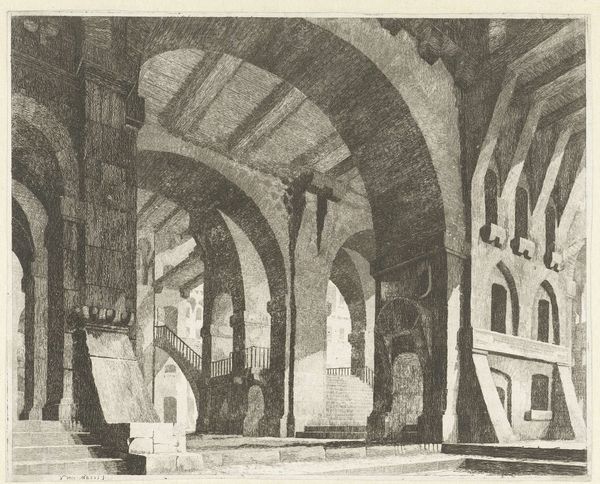
Architectural fantasy of an antique bath with ruined roof and figures 1777
0:00
0:00
drawing, architecture
#
drawing
#
neoclacissism
#
landscape
#
classical-realism
#
fantasy-art
#
figuration
#
architecture
Dimensions: 421 mm (height) x 573 mm (width) (bladmaal)
Curator: What strikes me most is the solemn, almost mournful atmosphere. Despite the classical grandeur, there’s a sense of loss, of something beautiful decaying. Editor: Well said. Today we're observing "Architectural fantasy of an antique bath with ruined roof and figures," a drawing from 1777 by Robert Adam, held here at the Statens Museum for Kunst. Curator: Ruin is indeed the keyword here. Adam is using the Roman bath as a potent symbol. Bathhouses were central to Roman social life, places of ritual cleansing but also community and connection. Now, in this vision, they are crumbling. The ruined roof implies vulnerability. Even the decorative motifs look like masks of past glory. Editor: The figures scattered throughout enhance this. We see individuals almost dwarfed by the scale of the architecture, emphasizing a narrative of human fragility against the backdrop of time and history. Given the era, could this be read as a comment on the transience of empires? A critique, perhaps, of British colonial ambitions echoing the rise and fall of Rome? Curator: That’s an interesting intersectional interpretation, grounding the art in the period’s geopolitics. It makes the decay more pointed. I see the ruins more as an allegory, not just for a specific empire, but the inevitable entropy that affects all human creations. But look closer – there's rebirth, nature reclaiming these spaces through weeds and other new life above. Editor: I concede, there's definitely an ecological undercurrent we can read into this, predating its time. This blend of melancholy and acceptance seems relevant today as societies grapple with collapsing political frameworks. Curator: Ultimately, what Adam captured here goes beyond the classical aesthetic. It’s a meditation on time, memory, and our relationship with what’s left behind. A study of what the future sees when looking at us. Editor: Right. And how we, in turn, might learn from their perspective. Curator: Yes, a powerful reminder of the cyclical nature of history and cultural symbolism. Editor: Leaving us to contemplate not only the grandeur, but our part within it.
Comments
No comments
Be the first to comment and join the conversation on the ultimate creative platform.
